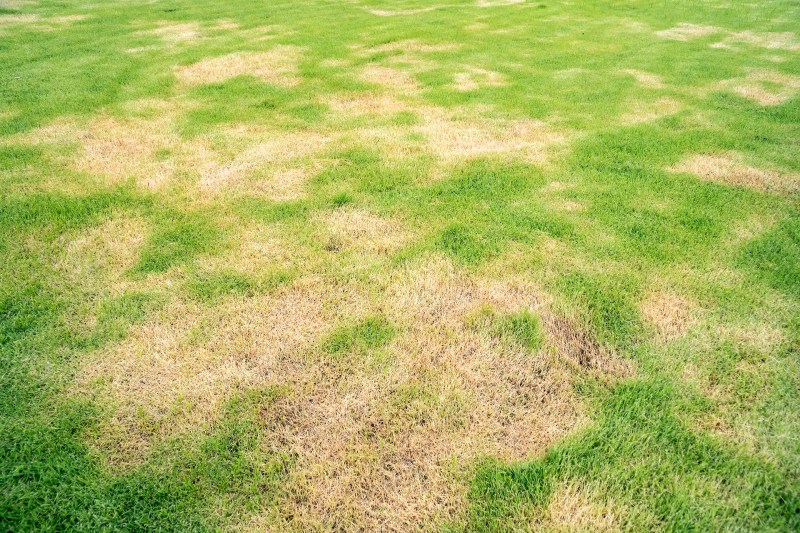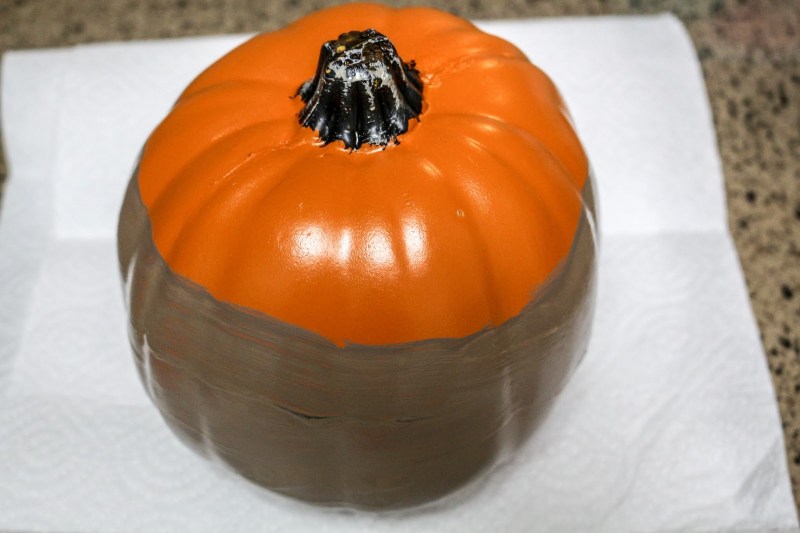How To Revive Centipede Grass – Centipede grass [Eremochloa ophiuroides (Munro) Hack.] was introduced to the United States from Southeast Asia. It is well adapted to the climate and soil of central and northern Florida and is the most common home turf in the Florida region.
Centipede grass is a slow-growing, low-maintenance grass with low fertility requirements. The grass grows close to the ground, has a medium texture and is naturally pale green in color. Over-fertilizing to achieve an unnatural dark green color reduces its cold tolerance, increases long-term maintenance problems and is thought to contribute to “centipede decline”.
How To Revive Centipede Grass

Centipede grass does very well on acidic and infertile soils. It has good to fair shade tolerance and good drought tolerance. It can be identified from seeds, sods or cuttings and is spread by stools. Maintenance and fertility requirements are low compared to other lawn grasses.
Identify Your Grass: Grass Types
Centipede grass is highly susceptible to damage by nematodes, especially ringworms. This damage limits the centipede’s use in the sandy soils of southern Florida. It is also vulnerable to insect attacks called ground pearls. It is naturally light green in color and is susceptible to iron chlorosis. It tolerates salt, abrasion and cold poorly.
Centipede stolons have a high lignin content and contribute to the formation of a thick thatch layer, especially at high fertility. The grass is often subject to “centipede atrophy”, the cause of which has not yet been determined. Decline is influenced by management practices and increases under conditions of high fertility, intensive irrigation and low mowing height.
4-5 years of intensive care causes the roots to die out in the spring. This condition is exacerbated by the accumulation of thatch, which causes new runners to grow several inches above the soil surface. The best solution to this problem is proper management, focusing on maintaining a healthy root system. This includes irrigating during drought stress, maintaining a mowing height of 1 1/2 to 2 inches, preventing thatch buildup, and maintaining a low fertility rate.
It is a low-maintenance variety that can be grown from seed or vegetatively. It grows slowly and flat.
Please Help Me Eliminate Torpedo Grass In Centipede Lawn
This variety was also selected for its cold tolerance. Like common oak, it needs vegetative rooting, but is more tolerant of alkaline soil than oak or common oak.
This variety was released by the University of Georgia in 1997. It has good cold and frost tolerance and can be propagated by seeds or vegetatively. It has a slightly faster growth rate than other centipede grasses.
Released in Tennessee in 1999, the variety has the best cold tolerance of centipedes. It is currently only available as grass, twigs or cuttings. Prefers full sun, but also tolerates shade.

Centipede grass grows from seeds, cuttings, twigs or grass. Planting centipede sod results in an instant lawn that grows faster and is less susceptible to various stresses. Place the sod on a well-prepared seed bed, placing the pieces closely together to prevent the sod from splitting.
How To Revive Dead Grass
Moisten the centipede grass soil surface thoroughly before laying the sod. Once the sod is laid, water it thoroughly and lightly roll it through to ensure firm contact between the sod and the soil. The entire area should be watered daily with 1/2 inch of water per application.
Once the grass is established in the soil, watering frequency can be reduced as needed. Although sod is more expensive than seeding or plugging, quality weed-free sod ensures a top-quality lawn.
Centipede seed is expensive, but seeding rates are low and this method of planting is probably cheaper than vegetative planting when time and labor are considered. The recommended seeding rate is 4 ounces per 1,000 square feet. The best time to sow is from April to July as this allows for a full growing season before winter.
Autumn sowing is undesirable because young seedlings may not take root well enough to survive the winter. Centipede grass seeds are naturally slow to germinate and may take 2-3 weeks. Soil leaching due to heavy rainfall or excessive irrigation should be minimized by lightly mulching the planted area.
Krob Landscape Blog
When buying seeds for planting, consider the quality of the seeds. Require seeds of 90% purity or better and at least 85% germination. Establishment or branching of centipede grass leaves open areas of soil susceptible to invasion by fast-growing opportunistic weed species. Because of centipede’s slow growth, careful weed control measures must be taken when using this planting method.
The best time to plant centipedes is spring or early summer. This will help the lawn get established before the colder weather sets in when growth is limited. Seeds can be safely sown only at the end of the year, but in the fall their growth will again decrease significantly.
When establishing a lawn, it is important to water more often than is normally recommended. Until a viable root system develops, the lawn needs more watering. It is also important not to do this now before the roots have had a chance to penetrate the soil and become established.

Proper site preparation prior to planting is critical to ensure successful establishment. See “Preparing for Lawn Installation in Florida” for complete information. Centipede grass adapts best to a soil pH of 5.0 to 5.5. If the pH exceeds 6.5 to 7.0, severe iron chlorosis can occur.
Why Is My Grass Turning Brown And How Do I Fix It?
A pre-seed application of irrigated sulfur at a rate of 430 pounds per acre (10 pounds per 1,000 square feet) can be used to lower the pH of some Florida soils by 1 pH unit. Do not use more than 10 pounds per 1,000 square feet of wettable sulfur per application. If more is needed, leave a 60-day interval between applications. To activate the sulfur, moisten with a 1-inch amount after each use. Lime is rarely needed for centipede grass.
Proper lawn fertilization is an important part of home lawn management best practices. Fertilizing and other cultural practices can affect the overall health of your lawn and make it less susceptible to many stressors, including weeds, insects and disease.
It is recommended that homeowners conduct soil testing annually. Your local Cooperative Extension Service office has recommendations and bags for collecting soil samples and sending them to the Extension Soil Test Laboratory for analysis. In particular, phosphorus content is best determined by soil analysis. Because many Florida soils are high in phosphorus, your lawn may need little or no phosphorus to grow satisfactorily.
Centipede grass lawns have very low fertility requirements. Centipede is a low-maintenance grass and does not respond to excessive fertilization, especially nitrogen. Centipede should not be over-fertilized with nitrogen into a sedge grass. Augustine. Overfertilizing the centipede can cause dieback, insect pressure, and thatch build-up.
Tlf Newby.. Centipede Striping
As with any turf grass, do not apply more than 1/2 pound of water-soluble nitrogen per 1,000 square feet at a time. Up to 1 pound of nitrogen per 1,000 square feet can be applied at one time, but at least 50% of that nitrogen should be in the slow-release form.
Typically, two weeks after spring regrowth, apply a complete fertilizer such as 16-4-8 at a ratio of 1/2 (water-soluble) to 1 pound (slow-release) nitrogen per 1,000 square feet. These three numbers refer to the percentage of nitrogen, phosphorus and potassium in the bag.
For example, a 50-pound bag of 16-4-8 contains 16% nitrogen, or 8 pounds of total nitrogen. This bag will fertilize 8,000 square feet at a rate of 1 pound of nitrogen per 1,000 square feet. The University of Florida Turf Grass Fertility Guidelines indicate the range of fertilizer rates at which a particular species can be successfully grown in different regions of the state. These series are included to meet individual homeowner preferences for low, medium or high maintenance lawns.

In addition, local microclimate effects can have a dramatic effect on grass growth, and multiple rates provide a better opportunity to account for these environmental differences. An example is a typical home lawn that is partially shaded and partially sunny. Grass growing in the shade should receive smaller doses of fertilizer than grass growing in full sun.
Centipede Grass Vs St Augustine: Which Is The Best Grass?
All rates are expressed in pounds of nitrogen per 1,000 square feet. If you have questions about using these amounts, see the Fertilizing in Florida section of this book. Fertilizer should be given to centipede grass in 1-3 applications to green up from spring to fall.
Apply or add nitrogen too early in the growing season, especially in northern Florida, or a later frost can damage the lawn. Also, don’t fertilize too late in the year, as this can slow regrowth the following spring. If you use water-soluble forms with a lower dosage, more applications are required to apply the full amount
How to plant centipede grass, how to revive my dead grass, how to revive brown grass, best time to plant centipede grass, how to revive dead grass fast, where to buy centipede grass seed, how to revive grass, best grass to mix with centipede, when to fertilize centipede grass, best way to revive grass, how to revive dead grass, how to make centipede grass spread


